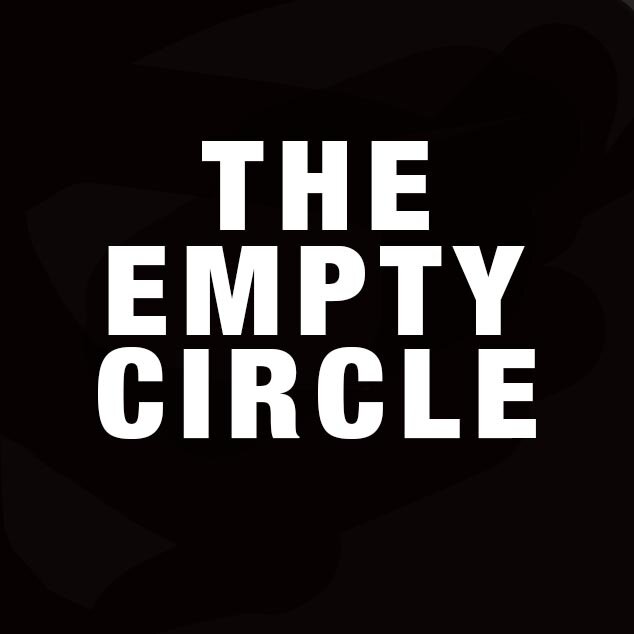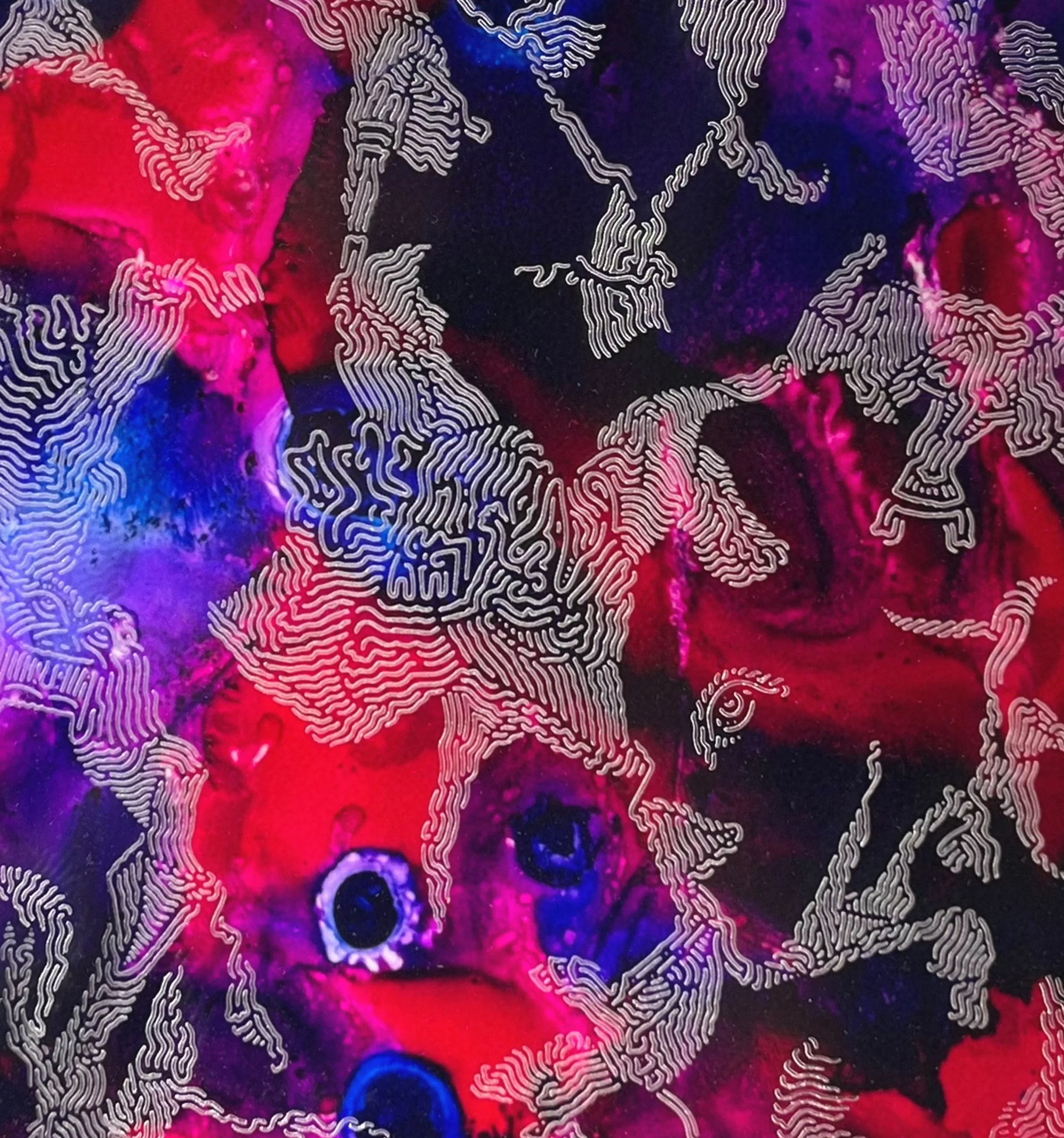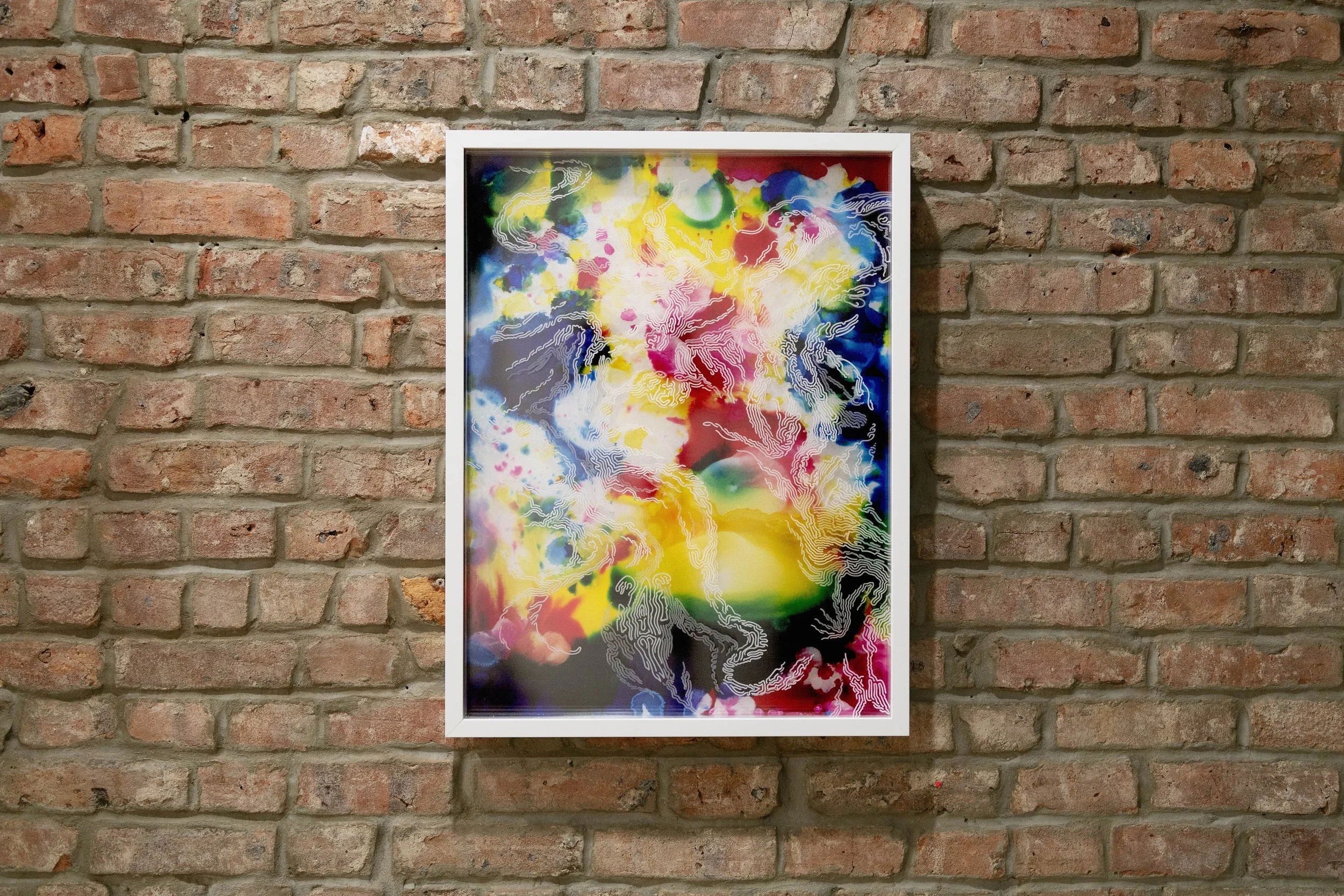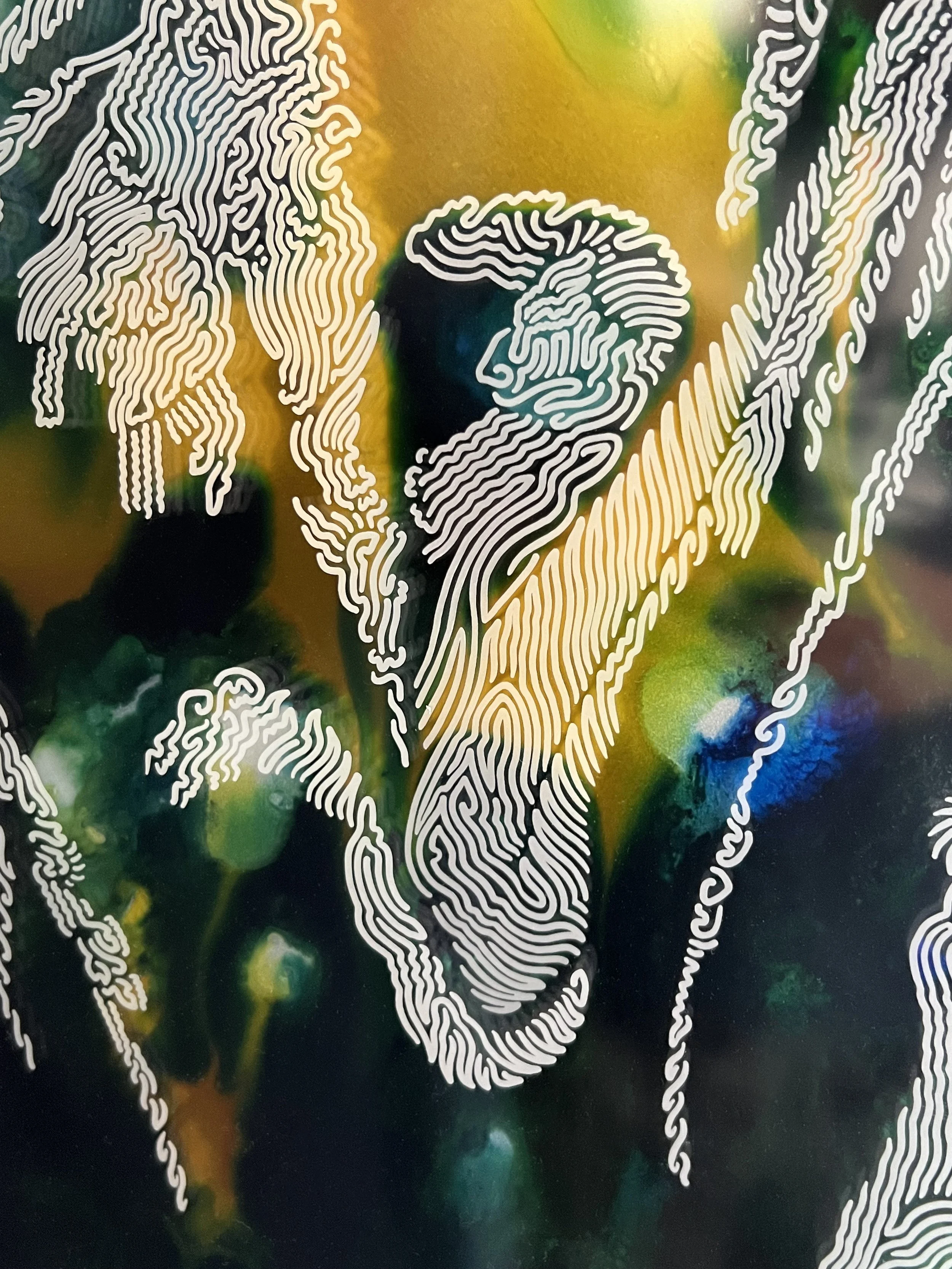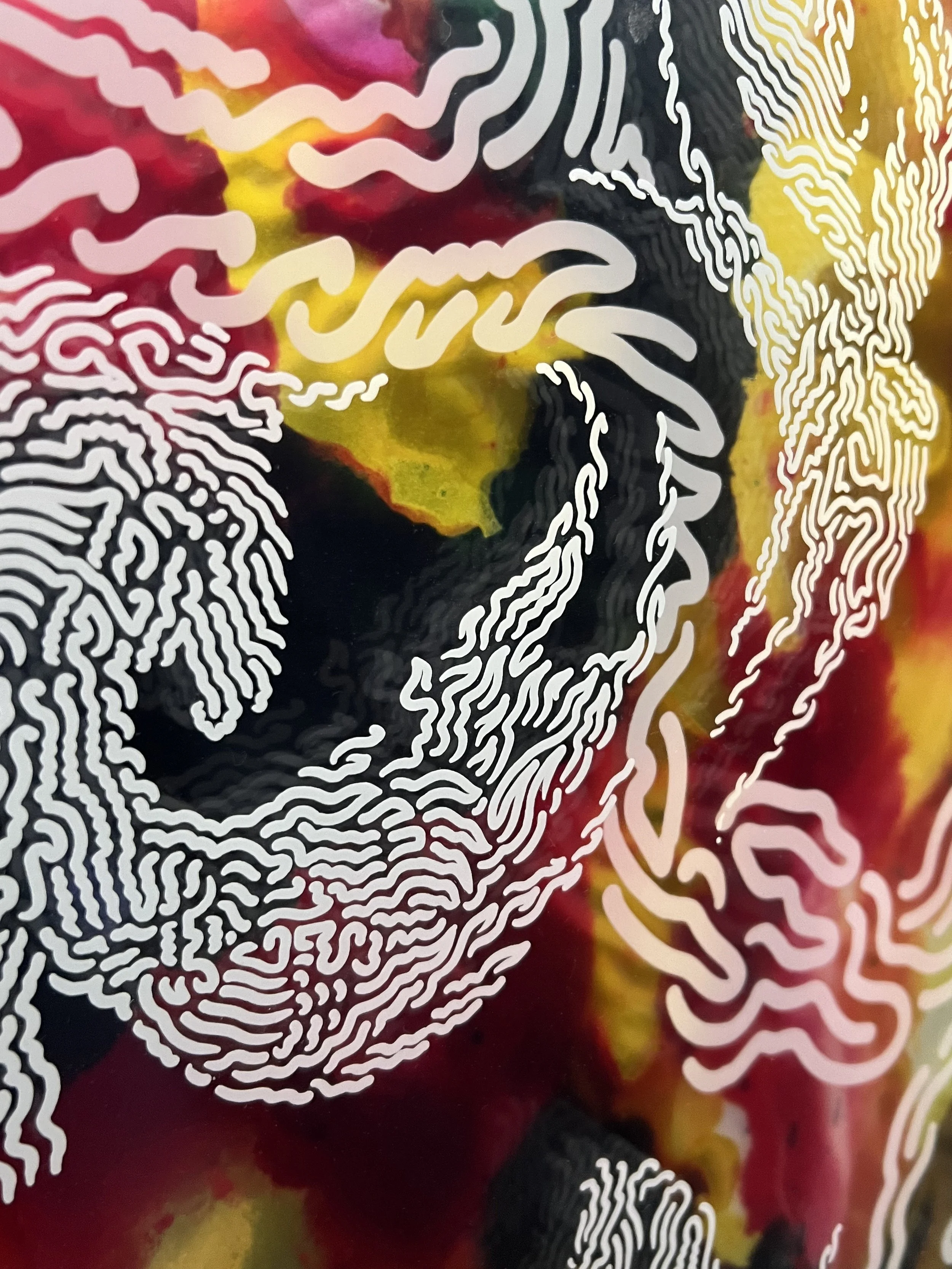Harrison Tenzer
Projections
January 10 - February 3rd, 2024
Opening Reception: January 10, 6:30 to 8:30pm
detail
The Empty Circle is pleased to present Projections, the debut solo exhibition of Harrison Tenzer. The title is intentionally suggestive of the term’s multivalent meanings, from projected images, as in the famous artistic origin story of Plato’s cave, to the psychological projections of Freudian psychoanalysis. Tenzer’s work embraces the full spectrum of these possibilities. In his work we find both the use of the projected image—in how shadows and reflections are cast by light interacting with layers of engraved linework—and the psychological projection, in terms of how Tenzer generates his linework by sketching them on an iPad in a meditative, trancelike state. The title also references how the viewer is invited to interpret the works as open-ended ciphers of meaning, foregrounding the mechanisms of their unique perception.
Projections is also the title of the body of work that Tenzer is exhibiting. Works in this series vacillate between standard painting sizes, and those of flat screen televisions, referencing two vehicles—one classical, one contemporary—of imagistic meaning-making. Materially the works are comprised of Plexiglas panels professionally etched with Tenzer’s automatist drawings, with an alcohol ink-stained Plexiglas backing board behind, separated by spacers to allow for a play of light and shadow, giving the work dimensionality despite the inherent flatness of the drawing.
Tenzer always doodled, but during the covid-19 pandemic he began creating intuitive drawings to cope with feelings of loneliness and fear, which ultimately led to the current body of work. The Projections are shaped by the pandemic context they emerged from, such as the use of alcohol ink in reference to hand-sanitizer and the ubiquity of Plexiglas screens as protective devices, which Tenzer connected to the mediating element of iPhone screens, televisions, etc. His use of Plexiglas is thus also a reference to the various ways in which we perceive the world today through the lens of screens and the distancing effects such devices have on society.









The spiritual is another possible valence of the trancelike state the drawings are made in, as well as of the open-endedness of their interpretation. The layering of Plexiglas suggests different levels of reality, as if we peer into multiple cognitive and psychic realms as we excavate the layers of a work. For example, there is the surfacing of the unconscious in the drawing, that of the atmospheric in the flowing staining of the backing panel, and the ambient light and shadow that connects them with the here and now of the viewer.
detail
Psychic energies are one of the many different things that Tenzer’s drawings can be understood as conduits for. The energy lines of invisible elements recorded by devices like EKG machines and Seismographs are also references for Tenzer. This reveals the Surrealist context of the automatist drawing technique used by Tenzer, who allows for chance operations, more than his own conscious decision-making, to determine the nature of the final image. In line with this, Tenzer stains his backing boards with a free flow of pigment which takes undetermined routes that he has little control over. Tenzer consciously links the stained backing boards to the tradition of ink blots, which have their origins in the 19th century proto-abstract drawings of French writer Victor Hugo, as well as Rorschach’s famed tests, highlighting the technique’s role in both the birth of abstract art and of modern psychology.
The artist encourages viewers to spend time with the works, moving around them, and exploring their different valances based on changing light conditions and different viewing positions, exploring the full potential of Tenzer’s charged yet open Projections.
—Alex Bacon
detail
detail
detail
detail
detail
